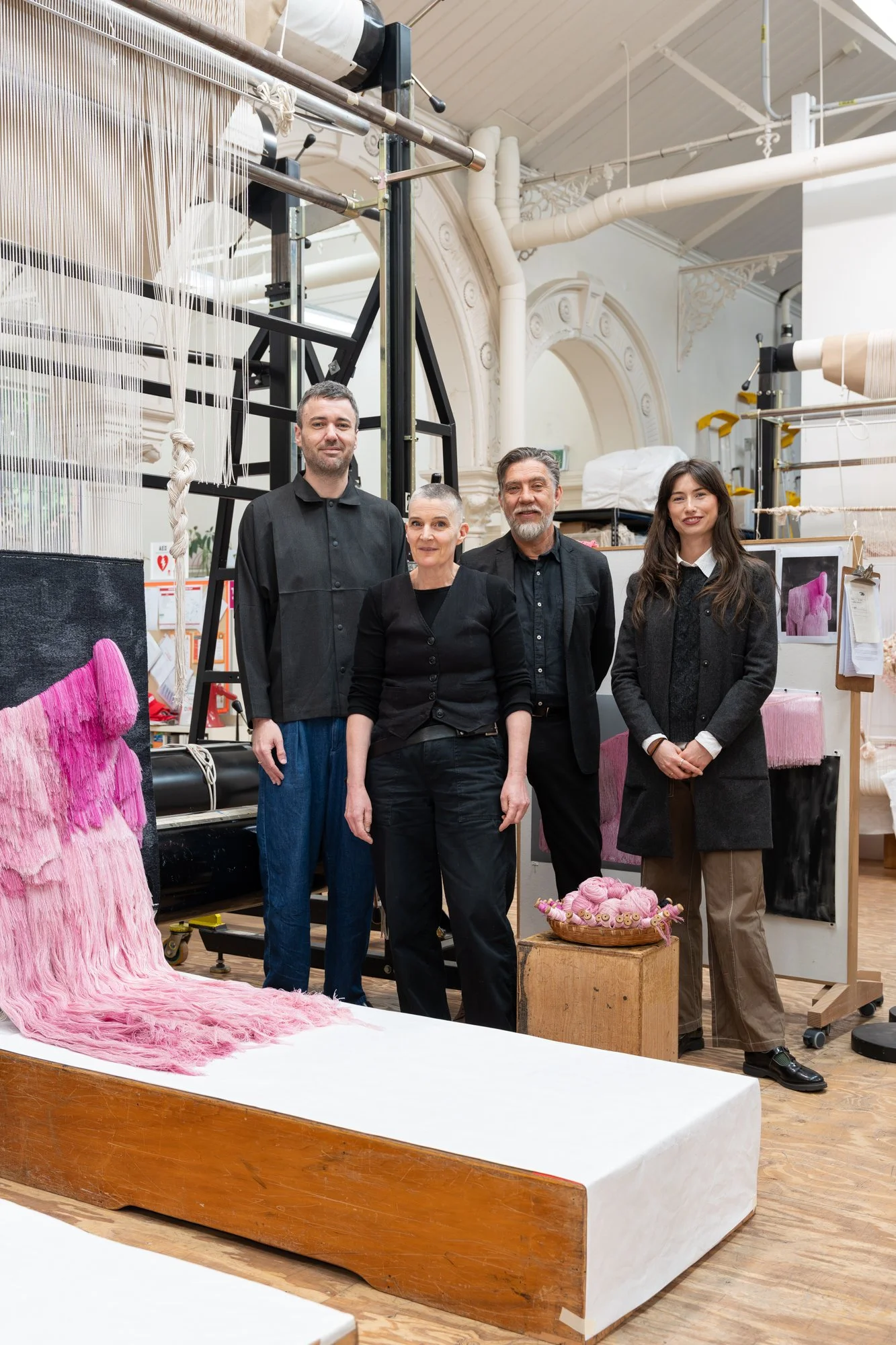Site 2: Lounge Room
Troy Emery + COX Architecture
Longing (Camilla)
Woven by Saffron Gordon
Longing (Camilla) is a two-dimensional interpretation of Troy Emery’s 2024 sculpture Lupa, an amorphous animal-like companion. In the domestic site of Walsh Street, Camilla echoes Boyd Family life with their pet cat of the same name. The excess tendrils of yarn drip down out of the plane of the woven surface towards the floor, stretching the silhouette of the animal figure and evoking emotion and memory.
Troy Emery is a Melbourne artist whose sculptural work using textiles blurs boundaries between fine art, museums, natural history, craft and domestic settings. Emery is represented by Michael Reid Gallery and his work is held in public collections across Australia.
COX Architecture is built “By the Many, For the Many”. The practice undertakes projects of international significance, from celebrated public buildings to intimate venues. With each typology, COX creates space for artists to showcase work of various styles and form.
L - R: Troy Emery, Saffron Gordon, Marc Raszewski (COX Architecture), Rachael Halstead (COX Architecture). Photography by Astrid Mulder.


